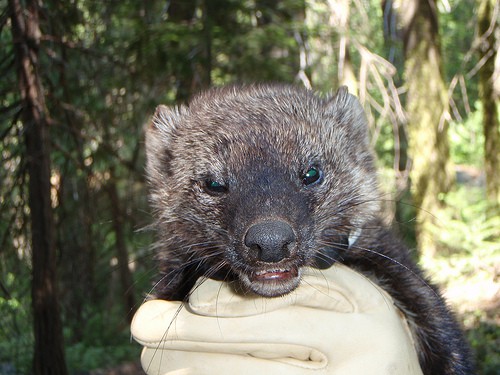From Courthouse News Service here:
(CN) – A federal judge has stopped three logging projects on National Forest lands in Arizona and New Mexico over concerns that they could harm the Mexican spotted owl.
In a 2010 federal complaint, WildEarth Guardians said the U.S. Forest Service had approved logging and grazing projects in Arizona and New Mexico without studying how the work might affect the Mexican spotted owl. The agency also allegedly failed to properly monitor the owl, which is a threatened species.
Reversing a previous ruling last week, U.S. District Judge David Bury put a temporary halt to logging on Upper Beaver Creek in Arizona’s Coconino National Forest, a utility maintenance project in several Arizona forests and the Perk-Grindstone project in New Mexico’s Lincoln National Forest.
An estimated 91 percent of Mexican spotted owls live on national forest lands. They grow to just 17 to 19 inches tall and prefer old-growth forests. According to the plaintiff’s amended complaint, “biologists estimate that the population of Mexican spotted owls in New Mexico is declining at the rate of approximately 6 percent annually, while the population in Arizona appears to be stable but is not increasing.” The bird has been listed on the Endangered Species List since 1993.
“The Forest Service promised it would count the numbers of the Mexican spotted owl and it hasn’t,” WildEarth Guardians spokesman Bryan Bird said in a statement. “But the agency continued business as usual with no idea how this imperiled bird is faring. It took a federal lawsuit to give the owl some much needed attention.”
Judge Bury sided with the environmentalists on Thursday after initially their call to stop logging projects pending further agency study and consultation with U.S. Fish and Wildlife.
“Defendant USFS tree cutting projects in the Perk-Grindstone Project, the Phase II Utility Maintenance Project, and the Upper Beaver Creek Watershed Project are preliminarily enjoined pending completion of the re-initiated programmatic consultation,” he wrote.
Bury noted that this reversal brings the WildEarth Guardian case in line with a related action involving the Center for Biological Diversity.
“While this court found in this case that the USFS’s failure constitutes a violation of the ESA – and so held in the CBD case – the court has not entered judgment on these claims in either party’s favor in this case,” he wrote. “For this reason – and to maintain consistency with the court’s previous statements regarding the legal consequences of failure to implement RPM 3 in both this case and the CBD case – WEG respectfully requests that the court modify its October 11 order in this case to hold for WEG on the claims arising from the USFS’s non-implementation of RPM 3 to the extent and in the manner proposed above. The court will so modify the declaratory relief portion of the order.”
The article has a links to the amended complaint here.
Here are some interesting things in the amended complaint:
As another example, the USFS has authorized the Phase II Utility Maintenance
Project in Arizona national forests. In connection with the project, the FWS has
determined that “it is reasonably certain that trees greater than nine inches dbh [diameter
at breast height] will be removed . . . within PACs.” This aspect of the project is
inconsistent with and violates the 1996 Standards and Guidelines.
99. As yet another example, the USFS has authorized the Perk-Grindstone Fuel
Reduction Project in the Lincoln National Forest in New Mexico. This project also calls
for timber harvest activities that are inconsistent with the timber harvest restrictions of the
1996 Region 3 LRMP amendments.100. Since the 2005 BO was issued, the USFS has also planned and authorized
grazing activities on national forest lands that are inconsistent with the standards and
guidelines of the 1996 Region 3 LRMP amendments.
This must be where the grazing activities come in.. does anyone know how grazing and the trees spotted owls need for habitat are related? Or how power line maintenance removing hazard trees (which would otherwise fall down, or they wouldn’t be a hazard?) would affect the owl (would they be nesting that close to power lines?) The intersection between the legal arguments and biology is not clear, at least to me.








